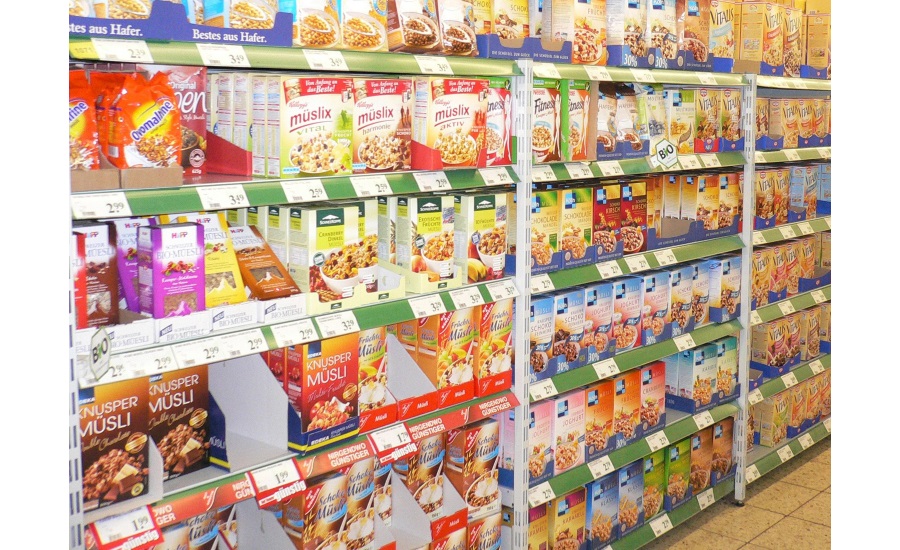The confectionery industry goes to enormous lengths to sway consumers with its products. Packaging chocolate and similar delights in appetizing wrappers and allowing the product to speak for itself are no longer enough these days. To entice the consumer, manufacturers today are digging deeper into their box of tricks. The latest trends include fun videos and commercials for their products that consumers can watch while eating the confectionery. One of the pioneers of “snackertainment,” in which the real and the digital worlds merge, is food giant Nestlé. In a marketing campaign with Internet leader Google, it has the red rectangular wrappers of “have-a-break” KitKat printed with QR codes that lead directly to the manufacturer’s own “YouTube my Break” channel. This is where consumers are entertained in a variety of ways – and thus cleverly hooked by the product.
What makes the campaign different is that the striking KitKat logo with its strong brand identity has been removed from its central position on the wrapper for this special edition and replaced by YouTube. In addition, Google’s Android operating system, in the wake of Cupcake, Donut, Froyo, Gingerbread, Honeycomb, Ice Cream Sandwich and Jelly Bean, was given a brand name in the form of KitKat for the first time ever. It is an open secret in the industry that Nestlé dug deep into its pocket for the privilege. This way the group is underlining something that experts and studies have recently repeatedly confirmed: that the package is of extreme importance today in communicating the brand – particularly in the confectionery sector. “With increasing product diversity, competition is getting tougher. If you want success on the confectionery market, you have to present your product well,” says Torben Erbrath of Germany’s Association of the Confectionery Industry (BDSI).
This applies all the more as the selection of sweets and bakery products at the point of sale is constantly growing. The existing products with traditions going back many years are being supplemented more and more by sugar-free or sugar- and fat-reduced confectionery. The range of confectionery suitable for vegetarian or vegan diets is also on the increase. In addition, confectionery that is gluten- or lactose-free or even halal or kosher can now be found in almost any supermarket. In the snack sector, says BDSI, the palette is growing in diversity and with a huge variety of flavors – whether in nuts, deep-fried or baked salty snacks. “Thanks to this vast diversity, there’s a matching product for every consumer,” says Erbrath. “The package paves the way into the shopping cart.” Package designers are therefore faced with a difficult task. They have to publicize the snack with memorable slogans across all possible media and showcase it on the shelves with attention-grabbing colors and shapes.
However, when jostling for position, it is best not to overdo it. Because making excessive use of materials and hence resources does not go down well with the consumer. “Customers are very conscious to keep their ecological footprint as small as possible. And they also have a strong desire for healthy, ultra-fresh foods that also come in convenient and attractive packages,” says Andreas Steinle of the Zukunftsinstitut (Future Institute), a think tank for trend and future research. But industry should do without overly flamboyant and elaborately produced packages for economic reasons as well as ecological ones. The cost not only of raw materials such as milk, cocoa and sugar, but also of energy and packaging materials is steadily rising.
To lastingly attract consumers who want sustainably produced goods and prevent the cost of materials and production from spiraling out of control, the industry has no alternative but to economize on materials and above all avoid excessively extravagant packages while also reducing energy input in production. The fact that material downsizing is possible is illustrated by studies by pacproject, an international firm of consultants. As an example, it took a close look at the historic Corny muesli bar wrappers and discovered that the product’s aluminum barrier film wrapper has been steadily reduced in the last 30 years and finally replaced by a new composite barrier material – without disadvantage to the product. “Even without full barrier protection, the Corny bar was still in a very good qualitative condition at the end of its sell-by date. And this raised the question whether the cereal bar actually needs the level of protection and barrier effect provided by current films,” says pacproject packaging engineer Alexander Witt.
Alternatives to classical packaging materials like aluminum and plastics are already making increasing inroads into the marketplace. Under its Greenbox label, Bionatic, for example, has developed its first range of some 250 different packaging solutions using renewable or recycled resources such as wood, cellulose, bioplastics and palm leaf. Many of these solutions are biodegradable or can be incinerated pollution-free, says Bionatic founder Robert Czichos. And their production is straightforward: “A single leaf is converted into package by first cleaning it with a high-pressure water jet. And then it is molded on exposure to heat in a mechanical press. So it’s a kind of deep-drawing process. This is followed by finishing in which the edges are smoothed and the surfaces polished. And that is pretty well it.”
Meanwhile scientists are searching for further alternative materials. In the context of its ThermoWhey project, the Fraunhofer Institute for Process Engineering and Packaging (IVV) is working on a production process for barrier coatings made of whey protein capable of replacing conventional oil-based polymer coatings. The advantage of whey is that its ingredients are naturally capable of extending the shelf life of foods. However, whey is heat-sensitive, so researchers first have to find a coating formulation that can also be processed at high temperatures.
Read more about packaging trends and Interpak.
Packaging Products for Success on the Shelf
The industry at-large seeks to balance material costs while reducing energy input in production

Simple, colorful and easily identified packaging appeal to consumers across categories.
PHOTO COURTESY OF BOSCH